Abstract
Comminuted ham was formulated with different levels of sodium nitrite and nitrate, inoculated with Clostridium botulinum, and pasteurized to an internal temperature of 68.5 C. When added to the meat, nitrite concentrations decreased, and cooking had little effect on them. Nitrite concentrations decreased more rapidly during storage at 27 than at 7 C; however they remained rather constant at formulated levels throughout the experiment at both incubation temperatures. The level of nitrite added to the meat greatly influenced growth and toxin production of C. botulinum. The concentration of nitrite necessary to effect complete inhibition was dependent on the inoculum level. With 90 C. botulinum spores/g of meat, botulinum toxin developed in samples formulated with 150 but not with 200 μg of nitrite per g of meat. At a spore level of 5,000/g, toxin was detected in samples with 400 but not with 500 μg of nitrite per g of the product incubated at 27 C. At lower concentrations of nitrite, growth was retarded at both spore levels. No toxin developed in samples incubated at 7 C. Nitrate showed a statistically significant inhibitory effect at a given nitrite level; however, the effect was insufficient to be of practical value. Analyses for 14 volatile nitrosamines from samples made with varying levels of nitrite and nitrate were negative at a detection level of 0.01 μg of nitrite or nitrate per g of meat.
Full text
PDF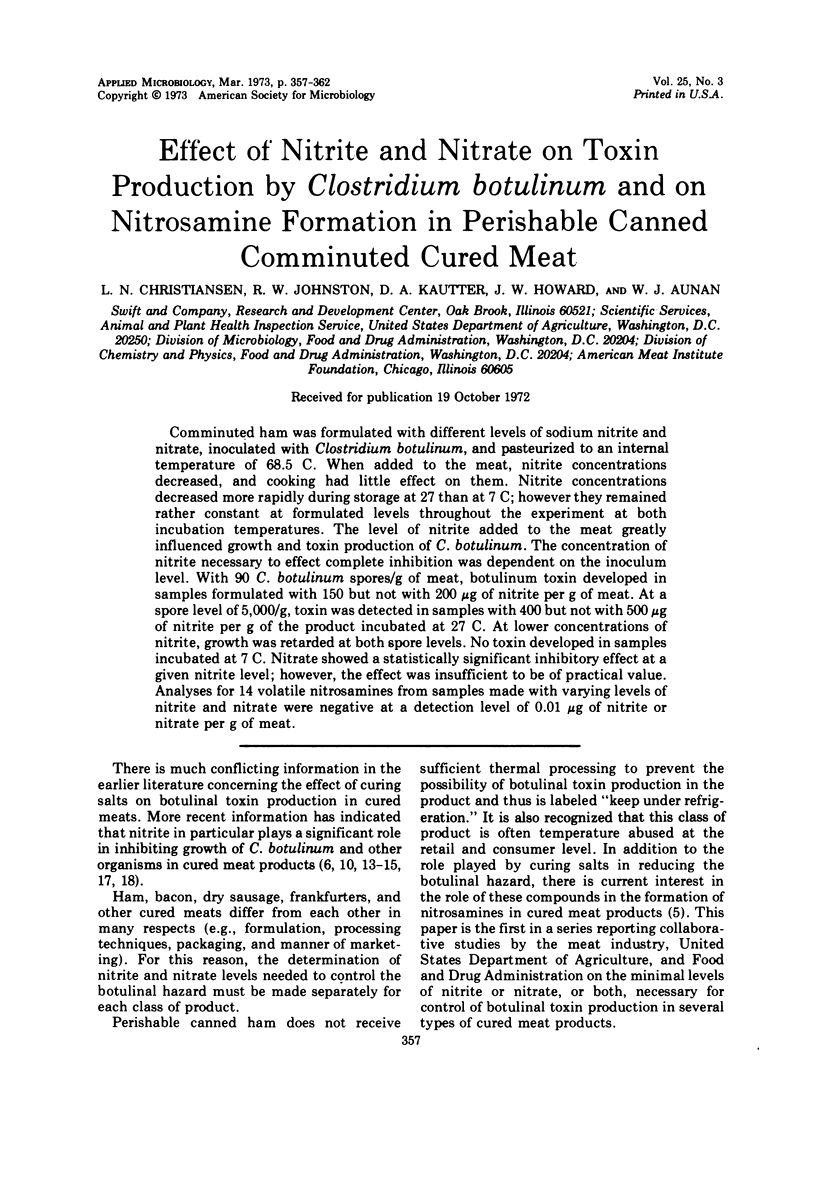
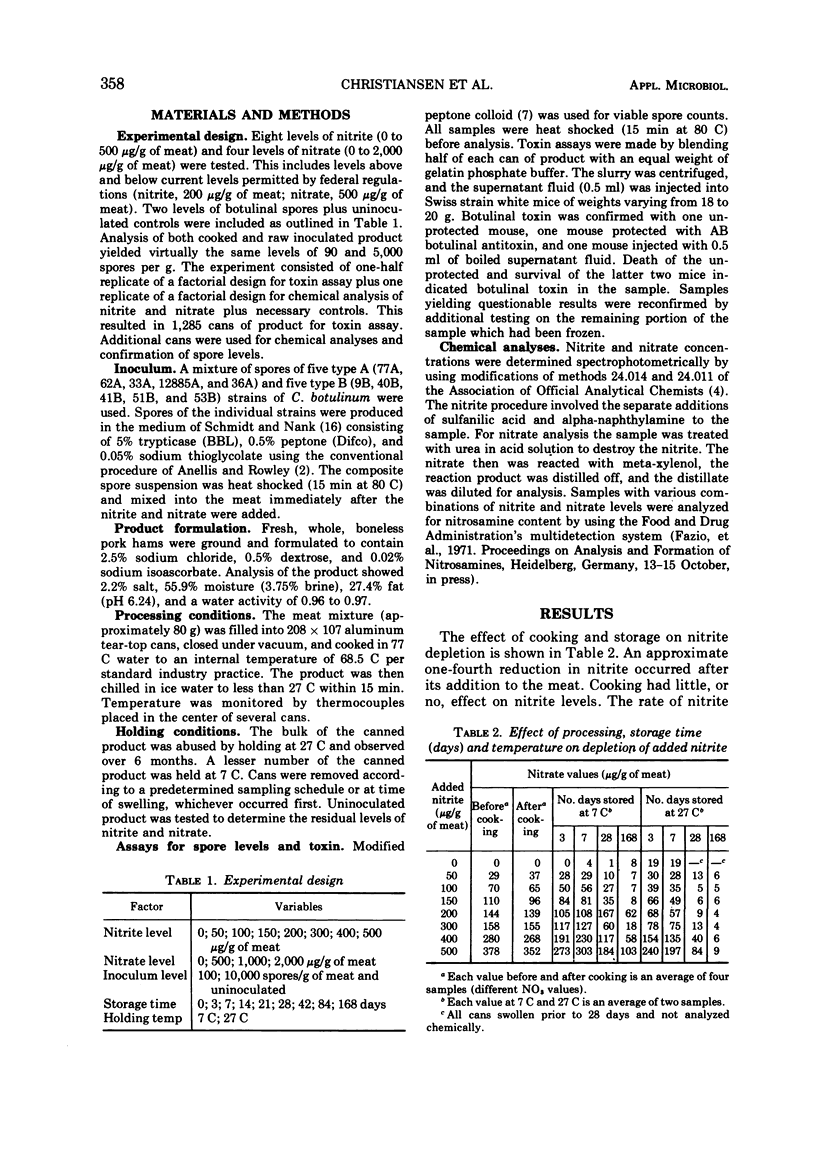

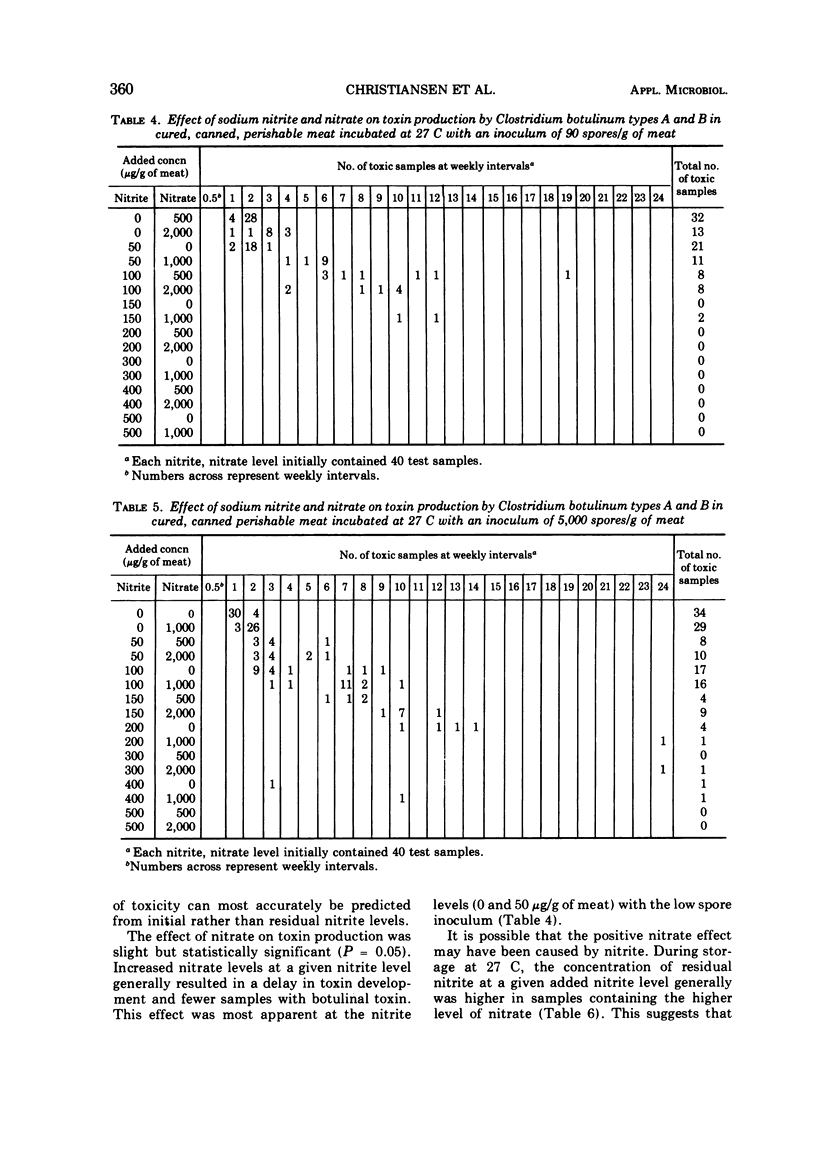
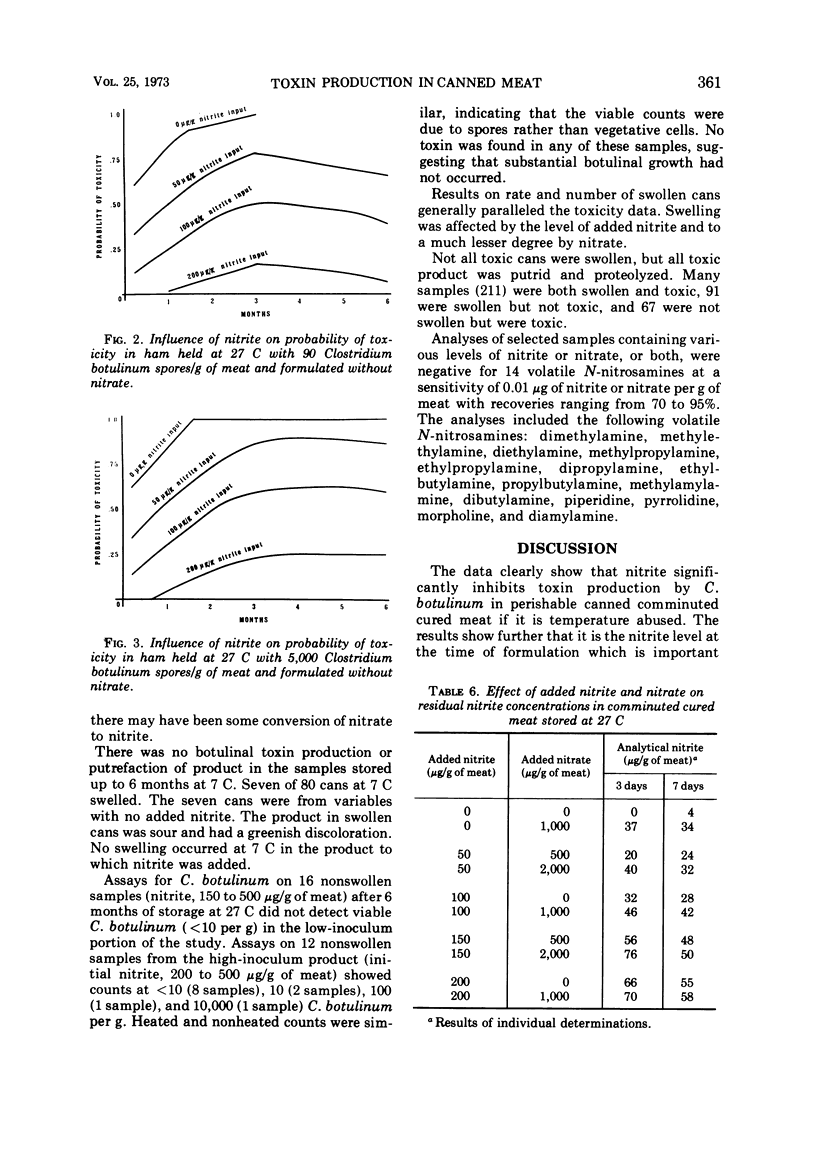
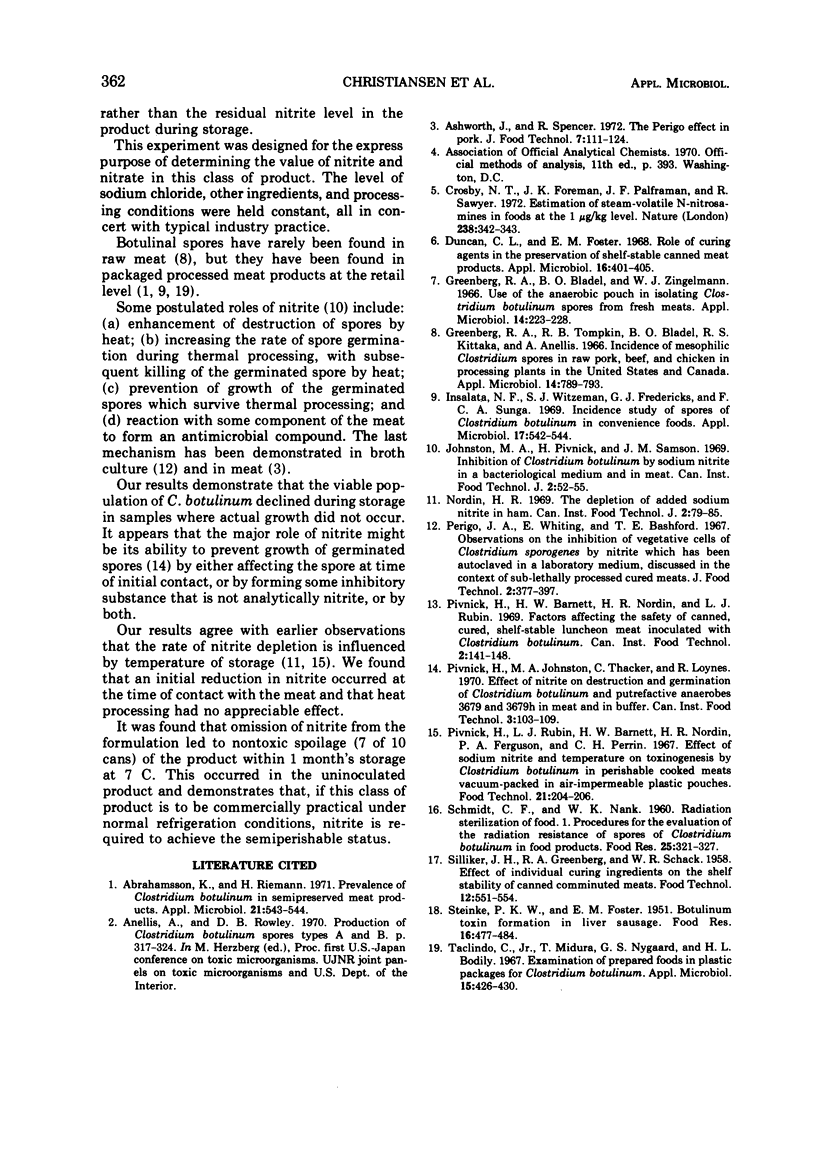
Selected References
These references are in PubMed. This may not be the complete list of references from this article.
- Abrahamsson K., Riemann H. Prevalence of Clostridium botulinum in semipreserved meat products. Appl Microbiol. 1971 Mar;21(3):543–544. doi: 10.1128/am.21.3.543-544.1971. [DOI] [PMC free article] [PubMed] [Google Scholar]
- Crosby N. T., Foreman J. K., Palframan J. F., Sawyer R. EWstimation of steam-volatile N-nitrosamines in foods at the 1 micro g-kg level. Nature. 1972 Aug 11;238(5363):342–343. doi: 10.1038/238342a0. [DOI] [PubMed] [Google Scholar]
- Duncan C. L., Foster E. M. Role of curing agents in the preservation of shelf-stable canned meat products. Appl Microbiol. 1968 Feb;16(2):401–405. doi: 10.1128/am.16.2.401-405.1968. [DOI] [PMC free article] [PubMed] [Google Scholar]
- Greenberg R. A., Bladel B. O., Zingelmann W. J. Use of the anaerobic pouch in isolating Clostridium botulinum spores from fresh meats. Appl Microbiol. 1966 Mar;14(2):223–228. doi: 10.1128/am.14.2.223-228.1966. [DOI] [PMC free article] [PubMed] [Google Scholar]
- Greenberg R. A., Tompkin R. B., Bladel B. O., Kittaka R. S., Anellis A. Incidence of mesophilic Clostridium spores in raw pork, beef, and chicken in processing plants in the United States and Canada. Appl Microbiol. 1966 Sep;14(5):789–793. doi: 10.1128/am.14.5.789-793.1966. [DOI] [PMC free article] [PubMed] [Google Scholar]
- Insalata N. F., Witzeman S. J., Fredericks G. J., Sunga F. C. Incidence study of spores of Clostridium botulinum in convenience foods. Appl Microbiol. 1969 Apr;17(4):542–544. doi: 10.1128/am.17.4.542-544.1969. [DOI] [PMC free article] [PubMed] [Google Scholar]
- Taclindo C., Jr, Nygaard G. S., Bodily H. L. Examination of prepared foods in plastic packages for Clostridium botulinum. Appl Microbiol. 1967 Mar;15(2):426–430. doi: 10.1128/am.15.2.426-430.1967. [DOI] [PMC free article] [PubMed] [Google Scholar]


